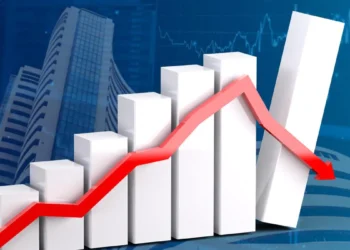Global rice prices soared to a 15-year high in August, primarily due to India’s restrictions on overseas rice exports, according to the Food and Agriculture Organization (FAO). While global food prices experienced a slight decline in August, rice prices surged by 9.8 percent compared to the previous month, primarily attributed to disruptions caused by India’s ban on Indica white rice exports, as reported in the FAO’s monthly analysis.
The FAO noted that the uncertainty surrounding the duration of India’s export ban and concerns over export limitations prompted supply-chain stakeholders to retain stocks, renegotiate contracts, or refrain from making price offers. This resulted in reduced trade volumes and limited activity to previously agreed sales.
Rice holds a crucial position as a staple food globally, and international markets have witnessed price hikes driven by a combination of factors, including the COVID-19 pandemic, the conflict in Ukraine, and the impact of the El Niño weather phenomenon on rice production.
India announced the ban on exports of non-basmati white rice in July, accounting for approximately 25 percent of its total rice exports. The decision was aimed at ensuring sufficient availability and curbing price surges in the domestic market. India is a major player in the global rice trade, accounting for over 40 percent of all rice shipments. The ban was expected to have repercussions on African nations, Turkey, Syria, and Pakistan, all of which were already grappling with high inflation, according to data analytics firm Gro Intelligence’s earlier warning.
In response to the challenges posed by India’s export ban, the Philippines, a significant rice importer, recently entered into a five-year agreement with Vietnam to secure rice supplies.
According to the FAO, world rice stocks are projected to reach an all-time high of 198.1 million tonnes, with India and China jointly holding nearly three-quarters of this volume, similar to previous seasons. This volume represents approximately 38 percent of the forecasted rice consumption over the same period. However, rice reserves in the rest of the world are expected to decline for the second consecutive year. Additionally, the El Niño weather phenomenon could adversely affect upcoming rice harvests.
This surge in rice market turmoil coincides with the gradual easing of global food prices from the peak observed last year when the conflict between major grain producers Russia and Ukraine escalated. In August, the FAO’s global food price index, tracking monthly changes in international prices of various food commodities, averaged 121.4 points, reflecting a 2.1 percent decline from July. Notably, this index was 24 percent below the peak recorded in March 2022. Cereal, meat, dairy, and vegetable oil prices all experienced declines in August.
Despite the overall decline, the pace of contraction was slower than the previous month, surpassing the nine percent drop forecasted by economists in a Bloomberg News survey. Furthermore, August witnessed significant year-on-year declines in shipments to Western countries, with exports to the United States dropping by 17.4 percent and those to the European Union decreasing by 10.5 percent.
Economist Zhiwei Zhang of Pinpoint Asset Management noted that the drop in trade was in line with expectations, given the persistently weak external demand. Zhang emphasized that policymakers are currently focused on addressing domestic economic challenges, particularly in the property market.
China’s property sector continues to grapple with issues such as major developers failing to complete housing projects, leading to protests and mortgage boycotts. The country’s trade surplus also declined, dropping to $68.3 billion compared to the previous month’s $80.6 billion. In addition, China’s gross domestic product (GDP) only grew by 0.8 percent in the April-June quarter, and youth unemployment reached a record level of over 20 percent in June.
This challenging economic landscape was further underscored by a recent report indicating that China’s services sector experienced significantly slower growth than expected in the previous month, adding to the prevailing negative sentiment.










